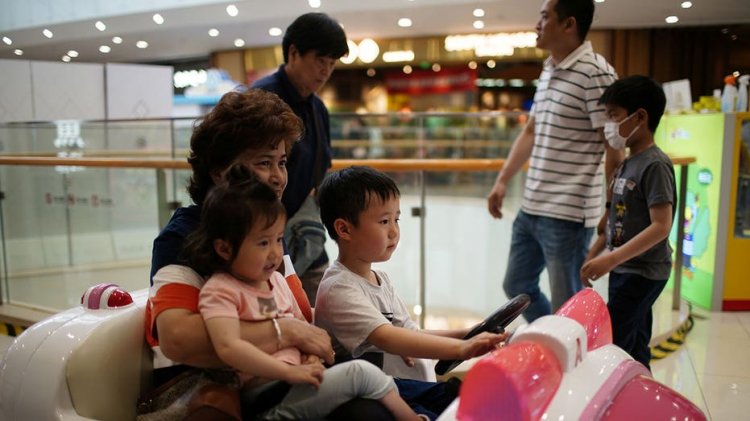China now brainstorming ways to boost its low birth rate after issuing decades-long one-child policy
After issuing a one-child policy for decades, China is now facing a shrinking population. Experts are now brainstorming new ways to boost its birth rate.

Concerned by China’s shrinking population, political advisors to the government have come up with more than 20 recommendations to boost birth rates, though experts say the best they can do is to slow the population's decline.
China dug itself into a demographic hole largely through its one-child policy imposed between 1980 and 2015. Authorities raised the limit to three in 2021, but even during the stay at home COVID times couples have been reluctant to have babies.
Young people cite high childcare and education costs, low incomes, a feeble social safety net and gender inequalities, as discouraging factors.
The proposals to boost the birth rate, made at the annual meeting of China's People's Political Consultative Conference (CPPCC) this month, range from subsidies for families raising their first child, rather than just the second and third, to expanding free public education and improving access to fertility treatments.
Experts took the sheer number of proposals as a positive sign that China was treating its ageing and declining demographics with urgency, after data showed the population shrinking for the first time in six decades last year.
"You cannot change the declining trend," said Xiujian Peng, senior research fellow at the Centre of Policy Studies at Victoria University in Australia. "But without any fertility encouragement policy then fertility will decline even
further."
A motion by CPPCC member Jiang Shengnan that young people work only eight hours per day so they have time to "fall in love, get married and have children," was critical to ensure women are not overworked, Peng said.
Giving incentives to have a first child could encourage couples to have at least one child, she said. Many provinces currently only subsidize second and third children.
To help alleviate the pressure on young families, the National Health Commission (NHC) issued draft rules on Wednesday that would allow qualified individuals to run day care operations for a maximum of five children up to three-years old.
China's birth rate last year fell to 6.77 births per 1,000 people, from 7.52 births in 2021, the lowest on record.
Demographers warn China will get old before it gets rich, as its workforce shrinks and indebted local governments spend more on their elderly population.
Experts also praised a proposal to scrap all family planning measures, including the three children limit and the requirement for women to be legally married to register their children.
Arjan Gjonca, associate professor at London School of Economics, said financial incentives were not enough and policies focusing on gender equality and better employment rights for women would be likely to have more impact.
CPPCC proposals such as maternity leave paid by the government rather than the employer would help reduce discrimination against women, while increasing paternity leave removes a barrier for fathers in taking more parenting responsibilities, experts said.
Demographer Yi Fuxian remains sceptical whether any measures would have a significant impact by themselves, saying China needed a "paradigm revolution of its entire economy, society, politics and diplomacy to boost fertility."
What's Your Reaction?
















